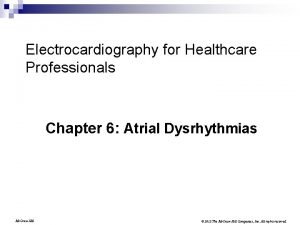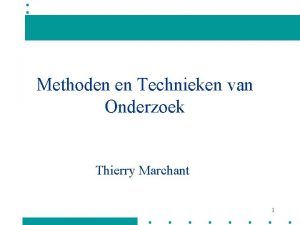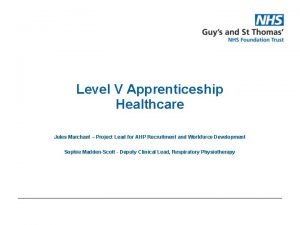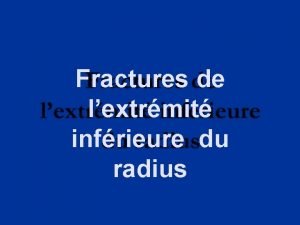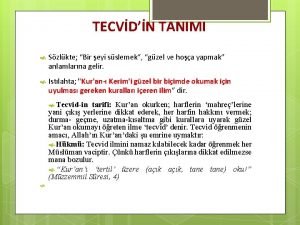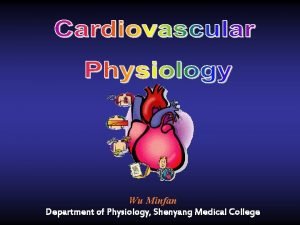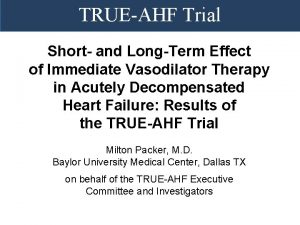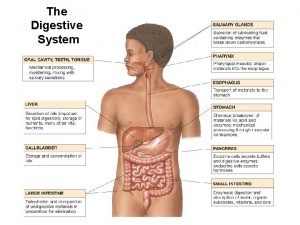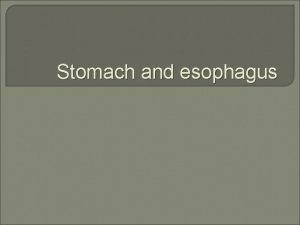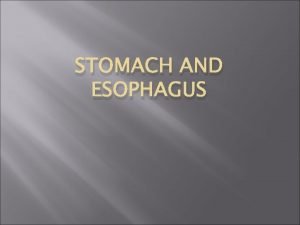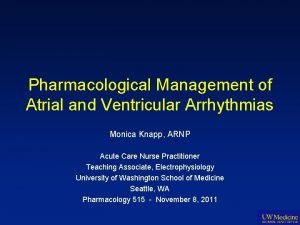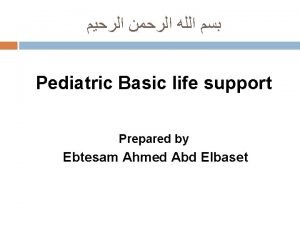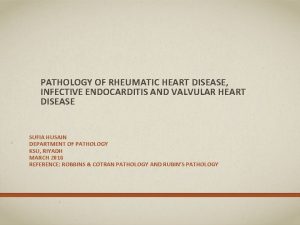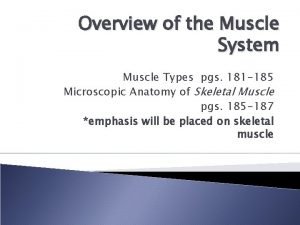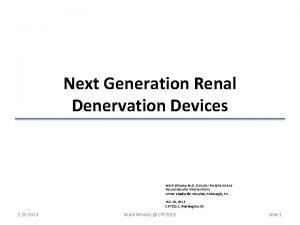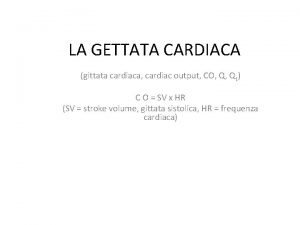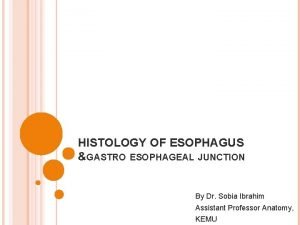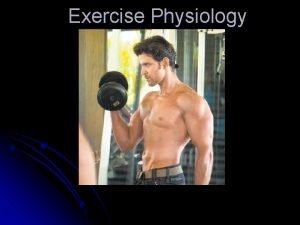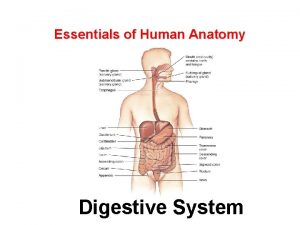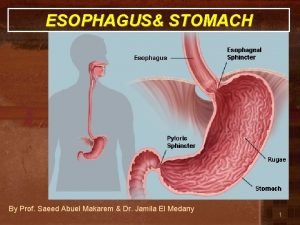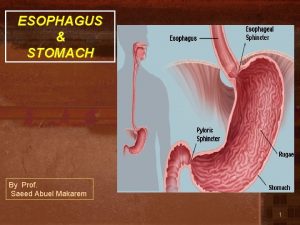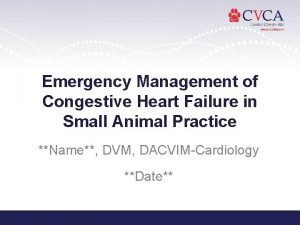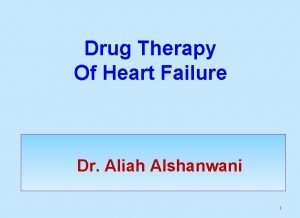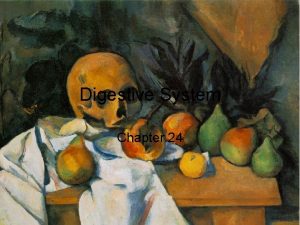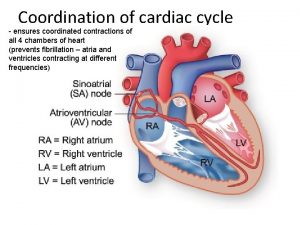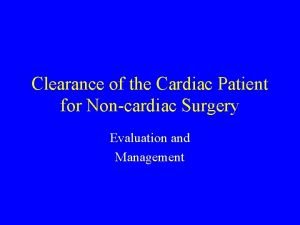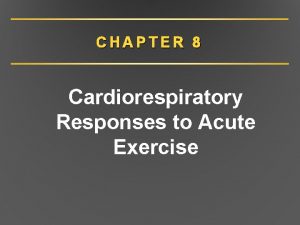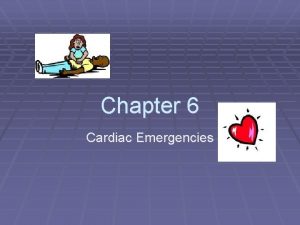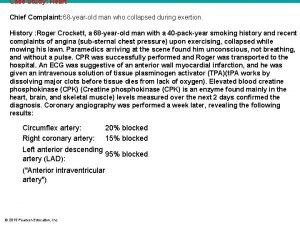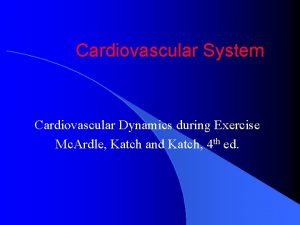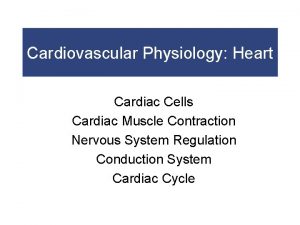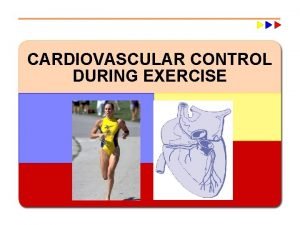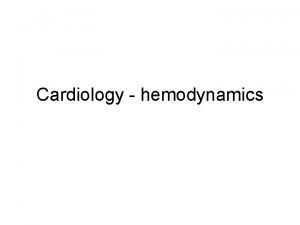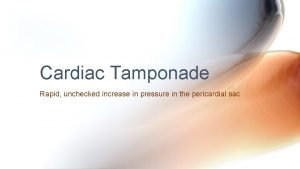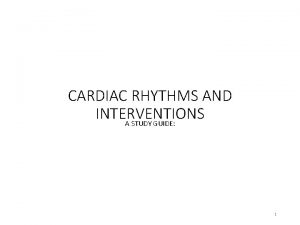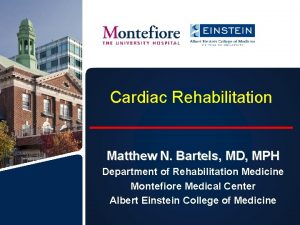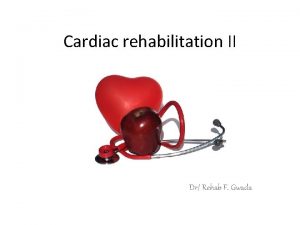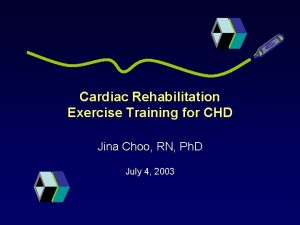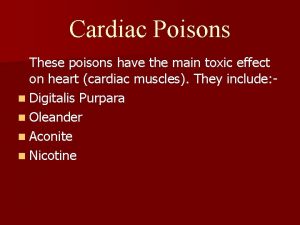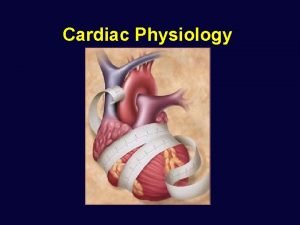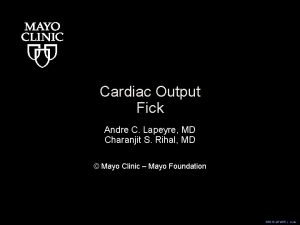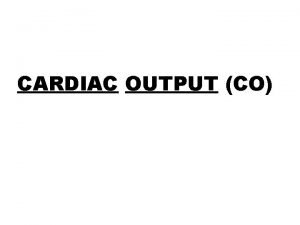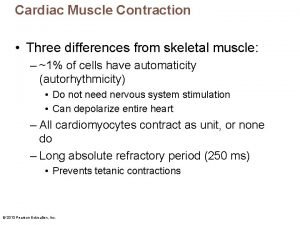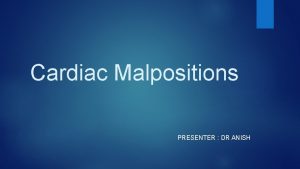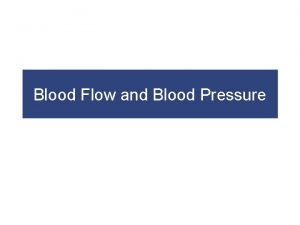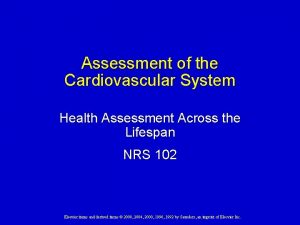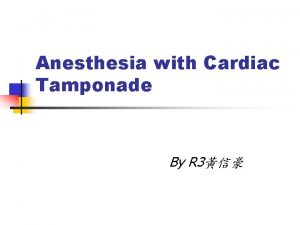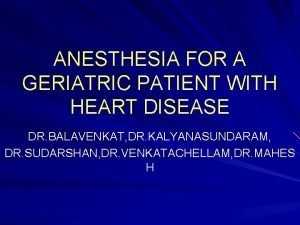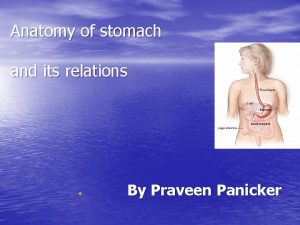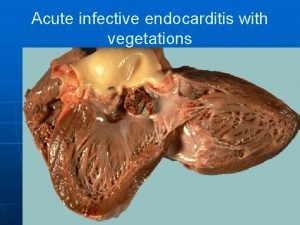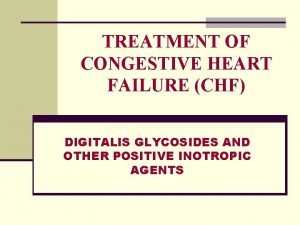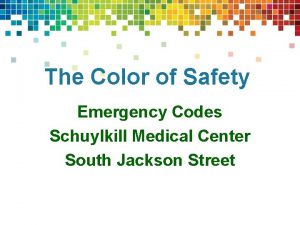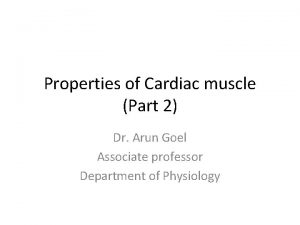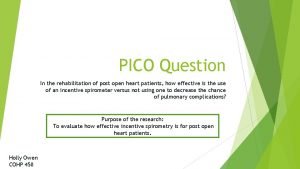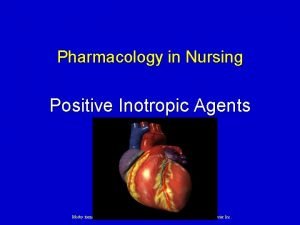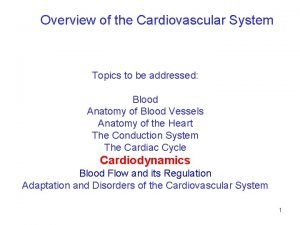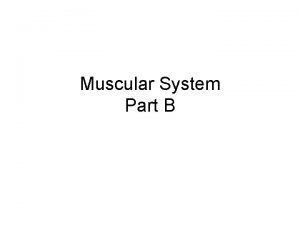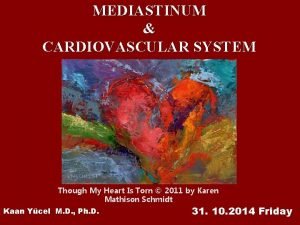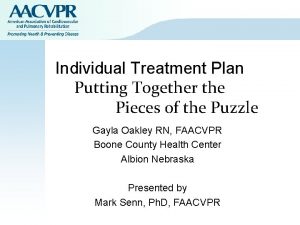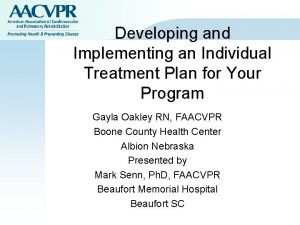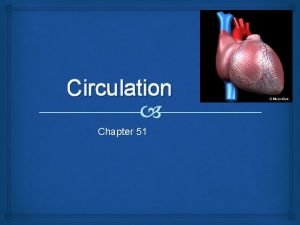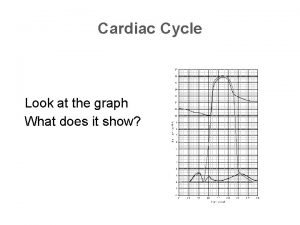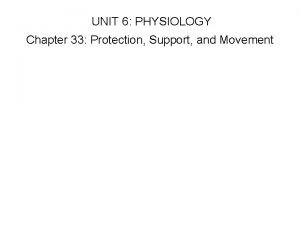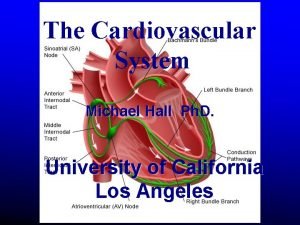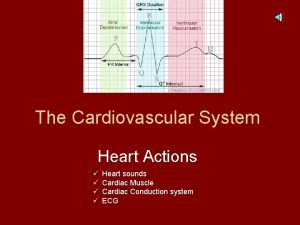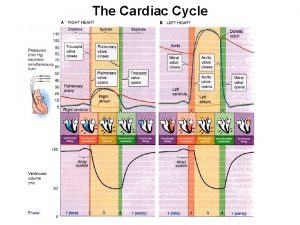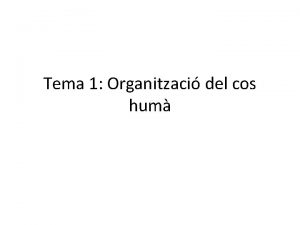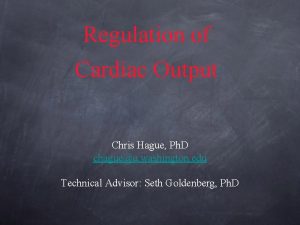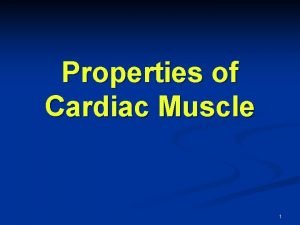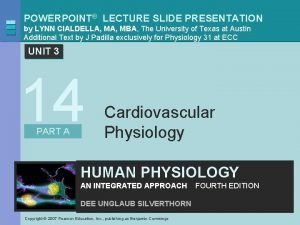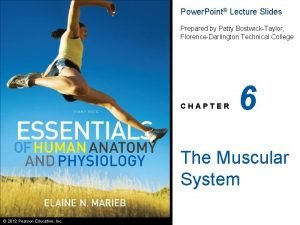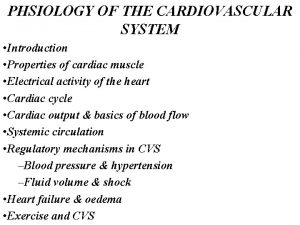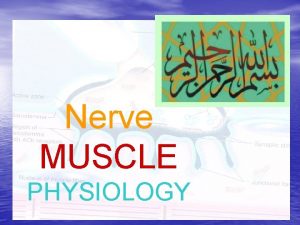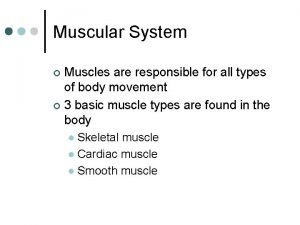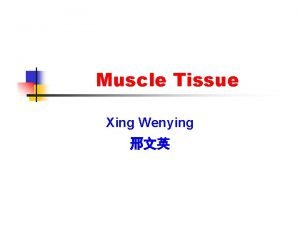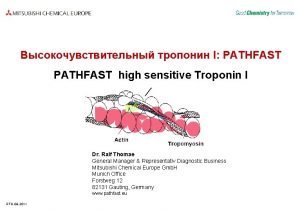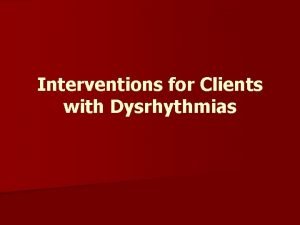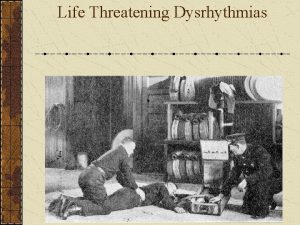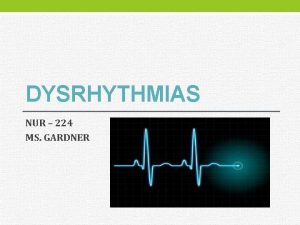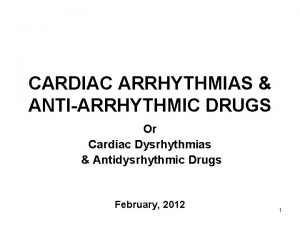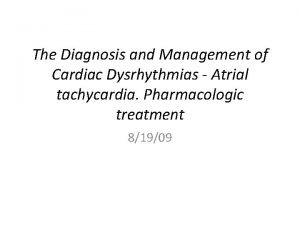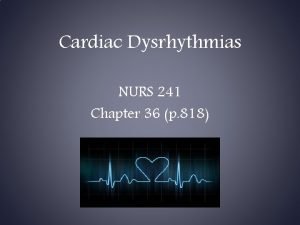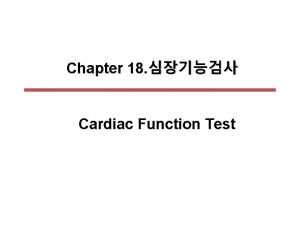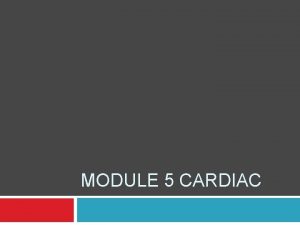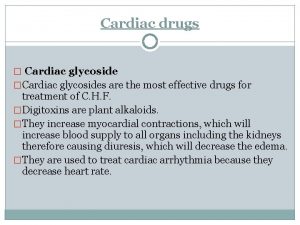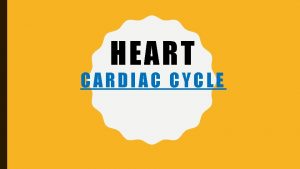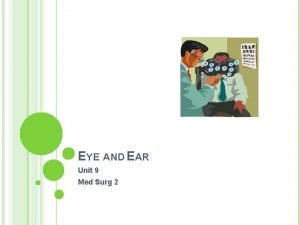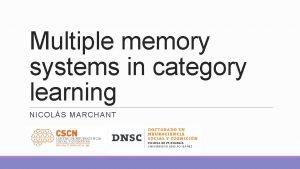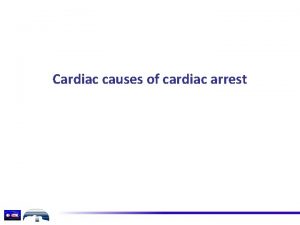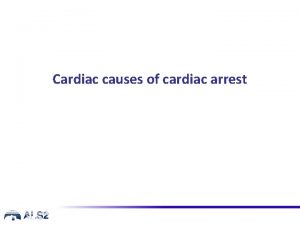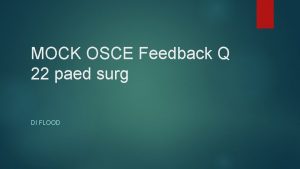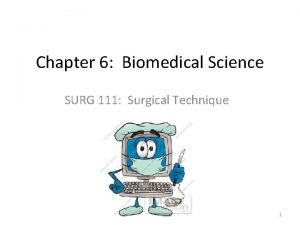Cardiac Dysrhythmias Med Surg II Kelly Marchant Learning





























































































- Slides: 93

Cardiac Dysrhythmias Med Surg II Kelly Marchant

Learning Objectives ¡Review core concepts related to cardiac dysrhythmias including components of the electrocardiogram, EKG analysis and basic interpretation ¡Describe the pathophysiology, clinical manifestations, nursing management and collaborative care of the patient with ¡ Atrial Flutter and Fibrillation (review) ¡ Premature Atrial & Ventricular Complexes (review) ¡ Ventricular Tachycardia and Fibrillation ¡ AV Blocks ¡ BBB ¡Analyze the application of common nursing interventions for clients with dysrhythmias, including interventions that can be safely delegated to unlicensed personnel. ¡Review Pharmacology ¡EKG Interpretation

Readings ¡Lehne Chapter 36 ¡Dubin Chapters 5, 6, & 9

Cardiac Anatomy

Cardiac Anatomy ¡ 4 Chambers, 2 Atria, 2 Ventricles ¡ 4 Valves ¡ Receives deoxygenated blood from body, pumps to lungs ¡ Receives oxygenated blood from lungs, pumps to body ¡ Heart functions a pump to deliver blood to the body ¡ Ability to pump is based on preload, afterload, and contractility

Automaticity

Impulse Generation ¡Under Usual circumstances ¡Impulse generated from pacemaker cells in SA node ¡Impulse then travels to AV node ¡Impulse then travels to Bundle of His ¡Impulse then travels to Right and Left Bundle Branches ¡Impulse travels to Perkinje Cells that innervate ventricles

Components of an EKG

EKG ¡Graph ¡ X Axis = time ¡ Y Axis = amplitude ¡Displays electrical activity of heart ¡Electrical impulse precedes contraction ¡Depolarization and repolarization are depicted as waves ¡ Atrial Depolarization = P wave ¡ Atrial repolarization occurs during ventricular depolarization ¡ Ventricular depolarization = QRS complex ¡ Ventricular repolarization = T wave

EKG Basics ¡Bipolar lead: positive and negative electrode. Measures electrical potential between the electrodes ¡AKA ‘Standard Limb Leads’ ¡Leads I, III ¡Used to monitor only for dysrhythmias ¡Lead II most commonly used

Telemetry Placement ¡Red = Brake (left), Green = Gas (right) ¡Smoke (black) over Fire (red), Snow (white) on the Trees (green) ¡Stars and Stripes ¡ r. Ed on left, wh. ITE on r. IGHT

Lead II

12 Lead EKG ¡ 3 Standard (bipolar) Limb Leads ¡ 3 Augmented (unipolar) Leads (a. VR, a. VL, a. VF) ¡ Triaxial reference- measures the difference in electrical potential between one of three extremity electrodes and the central terminal ¡ 6 Precordial (unipolar) Leads (V 1, V 2, V 3, V 4, V 5, V 6)

a. VR, a. VL, a. VF

The V Leads

Cardiac Waves

The P wave ¡Pacemaker is SA node, rate 60 - 100 ¡Correlates with atrial depolarization (begins in SA node moves R-> L and down) ¡PR interval 0. 12 -0. 2 ¡Determine atrial rate ¡Compare atrial rate to ventricular rate

The QRS Complex ¡Represents normal depolarization of the ventricles ¡Normal duration 0. 06 - 0. 12 ¡Measured from Q wave (first deviation from isoelectric line) to S wave (the return to isoelectric line) ¡Abnormal QRS is abnormal depolarization ¡ BBB ¡ Ventricular pre-excitation ¡ Cardiac pacemaker

The T Wave ¡Represents Ventricular repolarization ¡Occurs during end of ventricular systole ¡Typically in same direction as QRS complex ¡Lasts 0. 10 – 0. 25

U Wave ¡Final stage of repolarization, thought to be repolarization of Perkinje Fibers ¡Not usually seen ¡May indicate ¡ Hypokalemia ¡ Cardiomyopathy ¡ LVH ¡ Dig toxicity

EKG Paper At the 25 mm speed, Each mark at top is 3 seconds There are three large boxes between each mark Each large box is 1 second or 25 mm Each large box has 5 medium boxes in it Each medium box is 0. 2 seconds or 5 mm Each medium box is made up of 5 small boxes (or dots) Each small box (dot) = 0. 04 seconds or 1 mm

EKG Paper

Steps to Interpreting Cardiac Rhythms ¡Determine the Heart Rate ¡Determine the Regularity ¡Identify and analyze P waves or flutter ¡Determine PR interval and AV conduction ¡Identify and analyze QRS complex ¡Determine site of origin of dysrhythmia ¡Identify dysrhythmia ¡Evaluate significance of dysrhythmia

Determine the Heart Rate ¡The Six-second Method ¡ Most common/least accurate ¡ Simplest, quickest ¡Heart Rate Calculator ¡The Rule of 300 ¡ Must be regular ¡R-R Interval Method ¡ Rhythm must be regular ¡ Distance between peaks of 2 R w

Describe the Rate & Rhythm ¡Normal = 60 -100 ¡Tachycardia >100 ¡Bradycardia <60 ¡Regular ¡Irregular ¡Regularly-irregular

Sinus Dysrhythmias ¡ST = HR >100 ¡SB = HR , 60

Steps to Interpreting Cardiac Rhythms ¡Determine the Heart Rate ¡Determine the Regularity ¡Identify and analyze P waves or flutter ¡Determine PR interval and AV conduction ¡Identify and analyze QRS complex ¡Determine site of origin of dysrhythmia ¡Identify dysrhythmia ¡Evaluate significance of dysrhythmia

Measuring the Waves

PR Interval ¡Represents progression of electrical impulse from the SA node or an ectopic pacemaker (in atria or AV junction) through entire conduction system of the heart to the ventricular myocardium ¡Normal duration 0. 12 – 0. 20 ¡PR >0. 20 represents delayed conduction of impulse

Irregular P Wave ¡Remember P wave represents atrial depolarization ¡Irregular P represents altered, damaged, or abnormal atria ¡ Increased Right Atrial Pressure or hypertrophy as seen in COPD and CHF = tall peaked P wave ¡ Increased left atrial pressure or hypertrophy = wide notched P wave

Ectopic P Wave ¡Electrical impulse for ectopic P wave originated outside SA node or in AV junction ¡Occur in ¡ PAC’s ¡ Atrial tachycardia ¡ SVT

PAC’s ¡ Premature Atrial Contraction ¡ P wave followed by normal QRS ¡ Generally followed by non-compensatory pause ¡ P waves vary, PR intervals normal ¡ AV Ratio 1: 1 Conduction

Causes of PAC’s ¡Increased sympathetic tone ¡Infection ¡Emotional Stress ¡Stimulants ¡Medications; epinephrine ¡Hypoxia ¡Digitalis toxicity ¡ACS or CHF

QRS Complex ¡Represents normal depolarization of the ventricles ¡Onset is point where first wave (Q) deviates from isoelectric line ¡End is where last wave (S) returns to isoelectric line ¡Duration 0. 06 – 0. 12

Irregular QRS ¡Represents abnormal depolarization of ventricles ¡Irregular QRS present in ¡ Bundle Branch Block ¡ Ventricular preexcitation ¡ Cardiac pacemaker

QT Interval ¡Represents time it takes for ventricles to depolarize and repolarize ¡Prolonged QT associated with pericarditis, myocarditis, MI, LVH, hypothermia, CVA, increased IC trauma or hemorrhage, medication SE, electrolyte imbalances (K, Ca), or liquid protein diets

ST Segment ¡Represents early part of repolarization of right and left ventricles ¡Duration < 0. 20 ¡Normally ST segment is flat ¡Elevation can be evidence of myocardial ischemia or infarction, coronary vasospasm, pericarditis, LBBB, LVH, raised ICP

Steps to Interpreting Cardiac Rhythms ¡Determine the Heart Rate ¡Determine the Regularity ¡Identify and analyze P waves or flutter ¡Determine PR interval and AV conduction ¡Identify and analyze QRS complex ¡Determine site of origin of dysrhythmia ¡Identify dysrhythmia ¡Evaluate significance of dysrhythmia

Dysrhythmias ¡ Rate Arrhythmias ¡ Tachycardia ¡ Bradycardia ¡ Atrial Arrhythmias ¡ Afib/Aflutter ¡ WPW ¡ SVT ¡ Conduction Arrhythmias ¡ Bundle Branch Blocks ¡ AV Conduction Block (1 st, 2 nd, 3 rd Degree) ¡ Life Threatening Arrhythmias ¡ V Fib ¡ Complete Heart Block ¡ Asystole

Living Arrhythmias ¡https: //www. youtube. com/watch? v=TJR 2 Afx. VHs. M

Atrial Dysrhythmias ¡Atrial Tachycardia ¡Atrial fibrillation ¡Atrial flutter ¡Supra Ventricular Tachycardia ¡Wolf-Parkinson-White ¡ 8 Steps ¡ ID P or F waves ¡ Conduction ratio, is every P followed by QRS

Atrial Tachycardia ¡Rate is usually 160 -240 beats ¡Type of SVT, where generation for impulse is outside SA node ¡A Fib and Aflutter are most common forms ¡P waves are uniform ¡PR intervals are normal ¡AV conduction is 1: 1

Atrial Tachycardia ¡Clinical significance ¡ Dependent on presence and extent of heart disease ¡ Palpitations, nervousness, anxiety ¡ Perfusion ¡ Syncope ¡ Workload of heart ¡Nursing Assessment

Atrial Tachycardia

A Flutter ¡Causes ¡ Cardiomyopathy ¡ Atrial dilation ¡ Valve Disease ¡ Thyrotoxicities ¡ Hypoxia ¡ CHF ¡ ETOH Abuse

A Flutter ¡ Risks; Incomplete emptying of ventricles ¡ Thrombi formation ¡ Loss of atrial kick ¡ Syncope, hypotension ¡ CHF ¡ Treatments ¡ Beta Blockers ¡ CCB ¡ Digoxin ¡ Warfarin ¡ Cardioversion if uncontrolled ¡ Ablation

Atrial Flutter ¡ Impulse generated by ectopic pacemaker or reentry pathway ¡ F waves have a saw-tooth appearance ¡ Rate; Atrial 240 -360, Ventricular half the atrial rate ¡ Rate is regular ¡ Normal P waves absent ¡ Unable to measure PR intervals ¡ Expressed as ratio 4: 1 Flutter

Atrial Fibrillation ¡Atrial Rate 350 -600 ¡Ventricular rate < 100 = controlled, >100 = uncontrolled ¡Irregularly irregular rate ¡P waves absent, F waves absent

Atrial Fib ¡Causes and treatments similar to A Flutter

SVT ¡Rapid rhythm (>100) that generated outside the ventricles ¡AKA Paroxysmal Atrial Tach (PAT) ¡Symptoms ¡ Palpitations ¡ Lightheadedness ¡ Dizziness ¡ Maybe symptomless, self limiting Treatments Beta Blockers, CCB, antiarrhythmics

SVT

WPW ¡Ventricular pre-excitation; early activation of ventricles by impulse that bypasses the AV node ¡Impulse can be generated in accessory pathway or bypass tract that abnormally ¡Most frequent AV bypass tract in WPW is Bundle of Kent ¡Presence of Delta wave

Wandering Atrial Pacemaker ¡Dysrhythmia originating in multiple pacemaker sites that shift between SA node and AV junction ¡Rate 60 – 100 ¡Irregular ¡P waves vary in size and shape ¡PR intervals are normal to very short ¡AV Conduction ratio 1: 1

Wandering Atrial Pacemaker

Conduction Dysrhythmias ¡Conduction Block/ AV Block ¡Bundle Branch Block

AV Blocks ¡First Degree AV Block ¡Second Degree Type II AV Block ¡Third Degree AV Block

First Degree AV Block ¡Delay in conduction of electrical impulse, usually through the AV node ¡Most common Heart Block ¡Prolonged PR (> 0. 20) ¡Rate and Rhythm Regular ¡AV Conduction 1: 1 ¡Causes 1* AV Block ¡ Acute Inferior Wall MI ¡ Ischemic Heart Disease ¡ Digitalis Toxicity ¡ Medications (B Blockers, CCB) ¡ Hyperkalemia

First Degree AV Block

Second Degree Type I AV Block ¡AKA Wenckebach ¡Usually temporary condition, and asymptomatic ¡Prolonging PR form one QRS to the next until one QRS is not conducted or “dropped” then pattern starts over again ¡P to P intervals are regular ¡R to R intervals are irregular ¡More P waves than QRS complexes ¡Causes; Acute inferior wall MI, Ischemic heart disease, Dig Toxicity, BB, CCB, Hyperkalemia

Second Degree AVB, Type I

Second Degree Type II AV Block ¡Dysrhythmia with constant P-R interval with missing QRS complexes ¡Complete block of conduction in one bundle branch and an intermittent block in the other bundle branch ¡Can present as pattern, ie 2: 1 block or 3: 1 block OR without pattern of QRS/ unstable QRS ¡Causes; Damage to Bundle Branches p MI, ¡Very high potential to convert to Third Degree (Complete) Heart Block ¡Excessively slows HR May require pacemaker, Atropine not effective

Second Degree AVB

Third Degree COMPLETE HB ¡Complete absence of conduction of electrical impulse through AV node, Bundle of His, and BB ¡Atria rhythm independent from Ventricular rhythm; Regular P-P and regular R-R ¡LIFETHREATENING Rhythm, will lead to asystole ¡Requires Pacing ¡Causes; Inferior wall MI, Ischemic Heart Disease, Medications (Dig, BB, CCB), hyperkalemia

Complete Heart Block

Treatment of CHB ¡Cardioversion or Defibrillation ¡Transcutaneous pacing for symptomatic bradycardia ¡Medications ¡ Atropine ¡ Vasopressors ¡ CCB ¡ BB ¡Nursing Assessment

Bundle Branch Block ¡Irregular conduction or block of electrical pathway through bundle branches ¡Ventricles do not contract simultaneously ¡QRS > 0. 12, appears “notched”

Ventricular Dysrhythmias ¡PVC’s ¡Ventricular Tachycardia ¡Ventricular Fibrillation

Premature Ventricular Contraction, PVC’S ¡Abnormally wide, bizarre QRS complex, not associated with P wave ¡Electrical impulse generated in ventricle, Bundle Branch, or Perkinje Fibers ¡Does not lead to contraction of ventricles, therefor not “perfused” ¡Usually followed by compensatory pause ¡Can be observed with or without a pattern

Causes of PVCs ¡ Increased Catecholamine and increased sympathetic tone ¡ Stimulants ¡ Amphetamine and cocaine ¡ Myocardial ischemia or infarction ¡ CHF ¡ Hypoxemia ¡ Acidosis ¡ Dig Toxicity ¡ Hypokalemia ¡ Hypomagnesemia

Significance of PVCs ¡Isolated PVC without hx heart disease are usually insignificant, and require no treatment ¡May indicate presence of ventricular abnormality ¡Can lead to V tach or V fib

Single PVC

Ventricular Bigeminy

Ventricular Trigeminy

Couplet

Run PVC

Ventricular Tachycardia ¡AKA V Tach ¡Dysrhythmia originating in an ectopic pacemaker in the bundle branches, perkinje fibers, or ventricular myocardium ¡Rate 100 – 250 bpm ¡P wave absent ¡QRS abnormally wide and bizarre

V Tach

Causes of V Tach ¡Significant Cardiac Disease ¡ CAD ¡ ACS ¡ Cardiomyopathy ¡ LVH ¡Dig Toxicity ¡QT interval Prolongation ¡Electrolyte disturbances ¡Liquid protein diets

Clinical Significance of V Tach ¡Determine inset and termination ¡More than 3 PVCs is sustained V Tach ¡Can be short and asymptomatic ¡Monomorphic or polymorphic(Torsades de Pointes) ¡Increased frequency can lead to Ventricular Fibrillation which is LIFETHREATENING ¡PULSELESS V TACH IS TREATED THE SAME AS V FIB!

Ventricular Fibrillation ¡No coordinated ventricular beats are present ¡No P wave or QRS complexes noted ¡Electrical Chaos in Heart ¡Ventricles ‘contract’ at rate of 300 – 500 bpm ¡EMERGENCY ¡Cardiac output CEASES ¡Nursing Considerations

V FIB

Asystole ¡Total Absence of electrical activity in heart ¡Pt is clinically dead ¡Absence of P wave and QRS complex ¡Flat line ¡Remember, if your patient is speaking to you then they are NOT in a systole

Treatments ¡Cardioversion and Defibrillation ¡Medical Management ¡ Atropine ¡ Vasopressors ¡ Calcium Channel Blockers ¡ Beta Blockers ¡Nursing Considerations ¡ Oxygen, Pain management

Atropine ¡Blocks parasympathetic nervous system influence on the heart ¡Accelerates SA node firing rate ¡Increases HR ¡Increases conduction velocity ¡Administered by IV bolus ¡Used in ¡ Symptomatic Bradycardia ¡ First Degree AVB ¡ Second Degree Type I AVB

Atropine ¡Ineffective in Second Degree Type II AVB ¡ Advanced AVB with wide QRS complexes ¡ Third Degree AVB with wide QRS Complexes ¡Use with Caution ¡ Acute MI ¡ Worsening myocardial ischemia ¡ Heart Transplant patient

Vasopressors ¡Cause vasoconstriction on arterioles and venous circulation ¡Improves blood pressure ¡Increases HR and Strength of Contraction ¡ Epinephrine ¡ Vasopressin (DOC in asystole) ¡ Dopamine ¡ Norepinephrine ¡ Dobutamine ¡ Isopreterenol

Antidysrhythmics ¡Adenosine; depress AV node and Sinus node activity ¡ SVT, Tachycardia ¡ Will not terminate Afib/flutter but will slow rate ¡Amiodarone; Affects NA, K, and Ca channels ¡ SVT ¡ VT Vfib ¡Lidocaine; Widely used, ? Effectiveness in VT ¡ SE; altered consciousness, seizures, bradycardia ¡Procainamide; suppresses atrial and ventricular dysrhythmias by slowing conduction ¡ VT, control of rate in AF/AF, PVST

Calcium Channel Blockers ¡Diltiazem and Verapamil ¡Slow conduction and increase conduction time through AV node ¡Used in ¡ Afib and A flutter with rapid ventricular response ¡Contraindicated in ¡ 2 nd and 3 rd Degree AVB ¡ With Beta Blocker Therapy ¡ Use with caution on CHF and hypotension

Beta Blockers ¡Decrease HR and BP ¡Used in ¡ SVT ¡ To control rate in Afib Aflutter

Time for a Game ¡EKG Jeopardy! jeopardylabs. com/play/ekg-jeopardy#. VOLPYmdsow. gmail ¡Fifteen Question EKG Rhythm Strip Analysis http: //www. 12 leadecg. com/arrhythmias/index. cfm

Wave Matching 1. Ventricular Depolarization Rate 2. Irregular Ventricular Beat 3. Atrial Depolarization A. AV Node 4. 0. 12 -0. 20 B. T wave 5. Ventricular Repolarization C. PAC 6. Backup pacemaker Rate 40 -60 D. SA Node 7. Early atrial beat 8. Pacemaker site 9. 0. 06 -0. 12 10. Sets Normal Heart E. PVC F. P wave G. QRS Complex

Take Home Points ¡EKG is measurement of ELECTRICAL activity ¡Look at the patient ¡Irregular activity can progress from asymptomatic to life threatening ¡Causes are similar (electrolytes, hypoxia, ischemia…) ¡Treatments also very similar (BB, CCB, antiarrhythmic)

References ¡http: //lifeinthefastlane. com/ecg-library/ ¡http: //ekg. academy/learnekg. aspx? seq=11&courseid=315 ¡http: //my. clevelandclinic. org/services/heart/patienteducation
 Wap rhythm
Wap rhythm Methoden en technieken van onderzoek
Methoden en technieken van onderzoek Jules marchant
Jules marchant Gerard marchant fracture
Gerard marchant fracture Revm arapça tanımı
Revm arapça tanımı Cuadro comparativo e-learning b-learning m-learning
Cuadro comparativo e-learning b-learning m-learning Homometric regulation of cardiac output
Homometric regulation of cardiac output Cardiac distension
Cardiac distension Cardiac sphincter
Cardiac sphincter Cardiac cycle
Cardiac cycle Cardiac fundic pyloric
Cardiac fundic pyloric Short gastric arteries
Short gastric arteries Gastric bed
Gastric bed Refractory period cardiac
Refractory period cardiac Mets score cardiac
Mets score cardiac Amiodarone mechanism of action
Amiodarone mechanism of action Pediatric pat
Pediatric pat Jones criteria
Jones criteria Comparison of skeletal cardiac and smooth muscle
Comparison of skeletal cardiac and smooth muscle Wholey wire cardiac
Wholey wire cardiac Cardiac skeletal and smooth muscle comparison
Cardiac skeletal and smooth muscle comparison What is amputation bed
What is amputation bed Gittata sistolica
Gittata sistolica Cardiac dullness
Cardiac dullness Conclusion of comfort devices in nursing
Conclusion of comfort devices in nursing Esophageal gastric junction histology
Esophageal gastric junction histology Jordaan surgical
Jordaan surgical Map = co x tpr
Map = co x tpr Cardiac orifice of stomach
Cardiac orifice of stomach Gastric bed
Gastric bed Cardiac orifice
Cardiac orifice Dopamine vs dobutamine
Dopamine vs dobutamine Nesiritide mechanism of action
Nesiritide mechanism of action Chapter 24 the digestive system
Chapter 24 the digestive system Cardiac cycle
Cardiac cycle Cardio clearance meaning
Cardio clearance meaning Acute responses to training definition
Acute responses to training definition Cardiac output trained vs untrained
Cardiac output trained vs untrained Lesson 6: cardiac emergencies and using an aed
Lesson 6: cardiac emergencies and using an aed Cardiac output stroke volume
Cardiac output stroke volume Heart rate during exercise
Heart rate during exercise Cardiac muscle contraction
Cardiac muscle contraction Cardiac output trained vs untrained
Cardiac output trained vs untrained Cardiac output fick principle
Cardiac output fick principle Enlarged cardiac silhouette
Enlarged cardiac silhouette Jones and bartlett ekg strips 2012
Jones and bartlett ekg strips 2012 Phase 2 cardiac rehab exercises
Phase 2 cardiac rehab exercises Cardiac rehab phase 1
Cardiac rehab phase 1 Phase 2 cardiac rehab exercises
Phase 2 cardiac rehab exercises Cardiac poisons list
Cardiac poisons list Refractory period heart
Refractory period heart Fick principle cardiac output
Fick principle cardiac output Co ci normal values
Co ci normal values Intrinsic conduction system of the heart
Intrinsic conduction system of the heart Left border of relative cardiac dullness
Left border of relative cardiac dullness Cardiac distension
Cardiac distension Etiology of bronchial asthma
Etiology of bronchial asthma Cardiac assessment documentation example
Cardiac assessment documentation example Pericardiodesis meaning
Pericardiodesis meaning Revised cardiac risk index
Revised cardiac risk index Cardiac orifice
Cardiac orifice Cardiac vegetation definition
Cardiac vegetation definition Torrance memorial map
Torrance memorial map Torrance memorial cardiac rehab
Torrance memorial cardiac rehab Cardiac toxicity treatment
Cardiac toxicity treatment Fire staff codes
Fire staff codes Cardiac excitation-contraction coupling
Cardiac excitation-contraction coupling Comparison of skeletal cardiac and smooth muscle
Comparison of skeletal cardiac and smooth muscle Cardiac pico question examples
Cardiac pico question examples Inotropic effect
Inotropic effect Svr cardiac
Svr cardiac Eccentric movement
Eccentric movement Cardiac plexus
Cardiac plexus Cardiac edema
Cardiac edema Cardiac rehab itp template
Cardiac rehab itp template Cardiac rehab itp template
Cardiac rehab itp template Cardiac cycle animation
Cardiac cycle animation Comparison of skeletal cardiac and smooth muscle
Comparison of skeletal cardiac and smooth muscle Cardiac cycle graph
Cardiac cycle graph Pericardial friction
Pericardial friction Cardiac muscle mitochondria
Cardiac muscle mitochondria Cardiac muscle
Cardiac muscle Cardiac conduction
Cardiac conduction Cardiac cycle phases
Cardiac cycle phases Teixit muscular cardiac
Teixit muscular cardiac Spread of cardiac impulse
Spread of cardiac impulse Properties of cardiac muscles
Properties of cardiac muscles Why mba ppt
Why mba ppt Characteristics of skeletal smooth and cardiac muscle
Characteristics of skeletal smooth and cardiac muscle Orthorpnea
Orthorpnea Myosin actin
Myosin actin Elevation muscles
Elevation muscles Cardiac muscle
Cardiac muscle Pathfast hsctni
Pathfast hsctni
